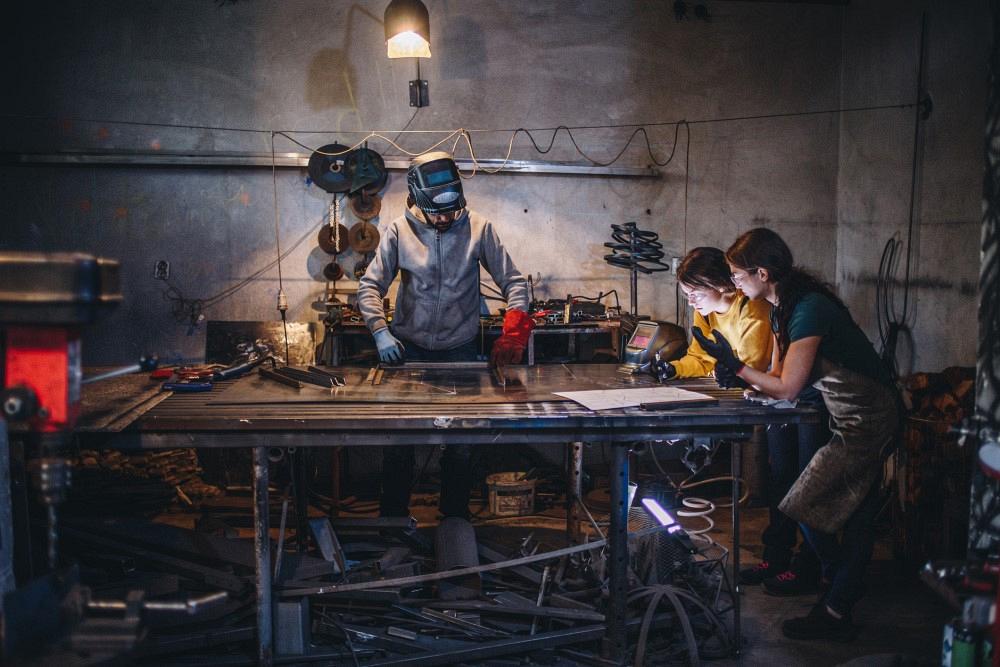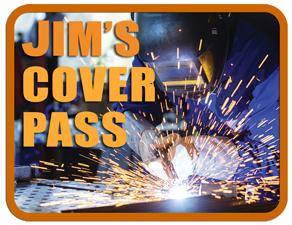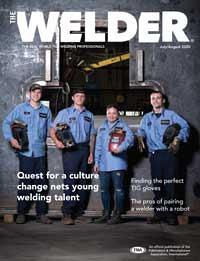Senior Company Trainer
- FMA
- The Fabricator
- FABTECH
- Canadian Metalworking
Categories
- Additive Manufacturing
- Aluminum Welding
- Arc Welding
- Assembly and Joining
- Automation and Robotics
- Bending and Forming
- Consumables
- Cutting and Weld Prep
- Electric Vehicles
- En Español
- Finishing
- Hydroforming
- Laser Cutting
- Laser Welding
- Machining
- Manufacturing Software
- Materials Handling
- Metals/Materials
- Oxyfuel Cutting
- Plasma Cutting
- Power Tools
- Punching and Other Holemaking
- Roll Forming
- Safety
- Sawing
- Shearing
- Shop Management
- Testing and Measuring
- Tube and Pipe Fabrication
- Tube and Pipe Production
- Waterjet Cutting
Industry Directory
Webcasts
Podcasts
FAB 40
Advertise
Subscribe
Account Login
Search
Jim’s Cover Pass: Prepping welding students to meet the needs of local industry
- By Jim Mosman, AWS, CWI/CWE
- August 19, 2020
- Article
- Arc Welding

Jim Mosman gives a fellow instructor tips to develop welders who can make an immediate impact on local industry. Getty Images
Q: We want our students to be certified up to 1-in. carbon steel plate so they can work in the local manufacturing and agriculture industry. We have recommended that our school teach the students on ½-in. steel plate with backing in the flat, vertical-up, and overhead positions. Other instructors have students weld on 3/8-in. plate, but that only qualifies them to weld up to ¾-in. material. What do you recommend is the best option?
A: I have a few suggestions for you to consider. First, assemble an advisory council comprising some people from your local industry to help determine specific requirements welders will need to meet for entry-level employment. Each company has specific qualifications and testing procedures, and that information would be very beneficial for your students to know ahead of time. You should also determine what welding processes and electrodes local companies are using to manufacture their products.
Any school or training institution that administers welder qualification tests should have one or more welding procedure specifications (WPS) that previously has been qualified to a specific welding code. I also recommend that the qualification test record or certification include the statement “For Educational Purposes Only” in a prominent location. These records help your students gain confidence and help employers select potential candidates for hire.
The WPS previously mentioned will determine the range of required variables used for the weld tests. My suggestion is that students practice and test on the 3/8-in. plate because that’s what’s commonly used in industry and because it’s more cost-effective for the school. Half-inch plate is more expensive and produces more scrap. The hardest part of the groove weld is always the root pass and then the cover pass. Let the students practice those parts until they are comfortable before attempting it with a thicker material with more filler passes.
For those students that have mastered the skills to weld the 3/8-in. plate, you can give them the option of doing a 1-in. unlimited weld test. Again, have a WPS available for the student to follow all of the variables. They also will need adequate time in the lab to complete the weld.
The 1-in.-plate weld tests are extremely expensive. If your advisory council members request that students be introduced to qualifying for this unlimited-thickness weld test, they should also be willing to donate the 1-in. plate to your program. To enhance the training experience, bring in a couple of certified welding inspectors (they should also be on your advisory council) on a Saturday for a student testing day near the end of your semester. A testing day is an excellent opportunity for your students to display the skills they have learned and introduce them to your advisory members at the end of the day.
About the Author

Jim Mosman, AWS, CWI/CWE
Lincoln Electric Education Division
About the Publication
Related Companies
subscribe now

The Welder, formerly known as Practical Welding Today, is a showcase of the real people who make the products we use and work with every day. This magazine has served the welding community in North America well for more than 20 years.
start your free subscription- Stay connected from anywhere

Easily access valuable industry resources now with full access to the digital edition of The Fabricator.

Easily access valuable industry resources now with full access to the digital edition of The Welder.

Easily access valuable industry resources now with full access to the digital edition of The Tube and Pipe Journal.
- Podcasting
- Podcast:
- The Fabricator Podcast
- Published:
- 04/16/2024
- Running Time:
- 63:29
In this episode of The Fabricator Podcast, Caleb Chamberlain, co-founder and CEO of OSH Cut, discusses his company’s...
- Trending Articles
Sheffield Forgemasters makes global leap in welding technology

Welding student from Utah to represent the U.S. at WorldSkills 2024

Lincoln Electric announces executive appointments

Engine-driven welding machines include integrated air compressors

ESAB unveils Texas facility renovation

- Industry Events
16th Annual Safety Conference
- April 30 - May 1, 2024
- Elgin,
Pipe and Tube Conference
- May 21 - 22, 2024
- Omaha, NE
World-Class Roll Forming Workshop
- June 5 - 6, 2024
- Louisville, KY
Advanced Laser Application Workshop
- June 25 - 27, 2024
- Novi, MI



























